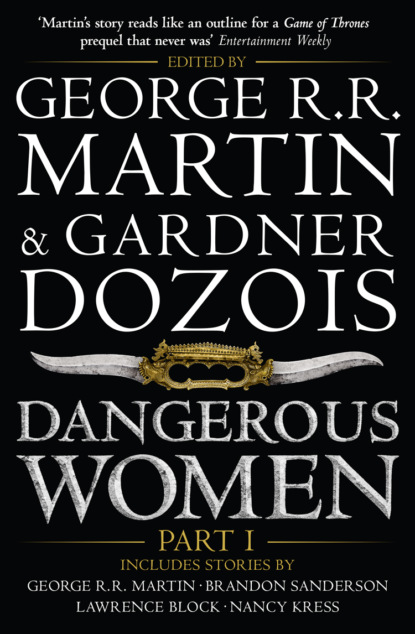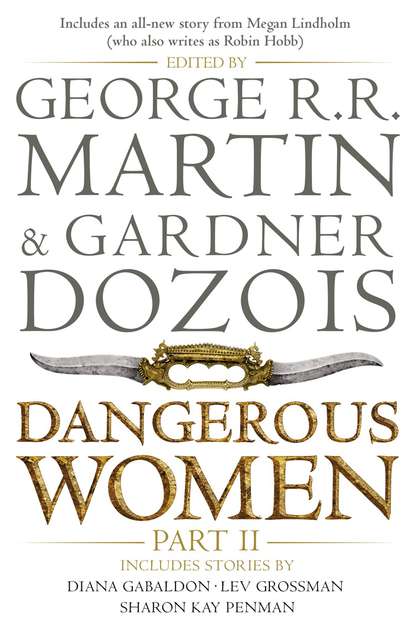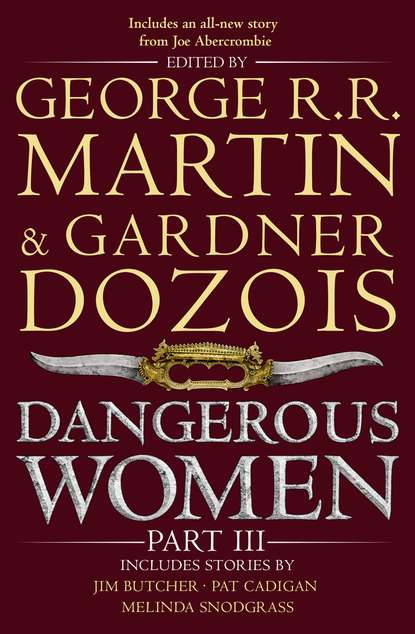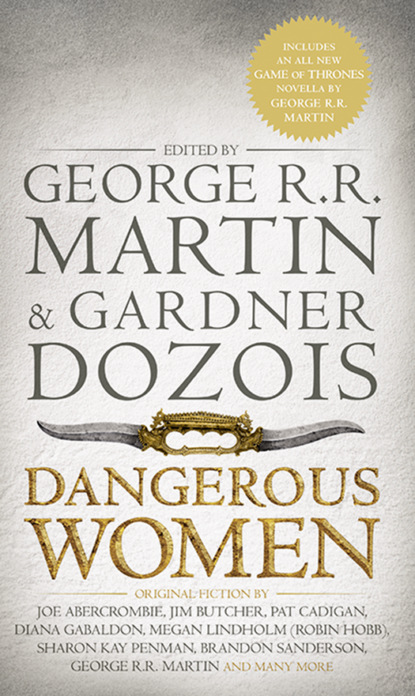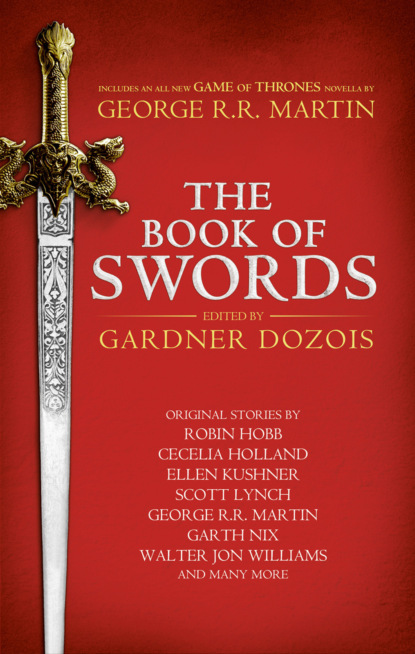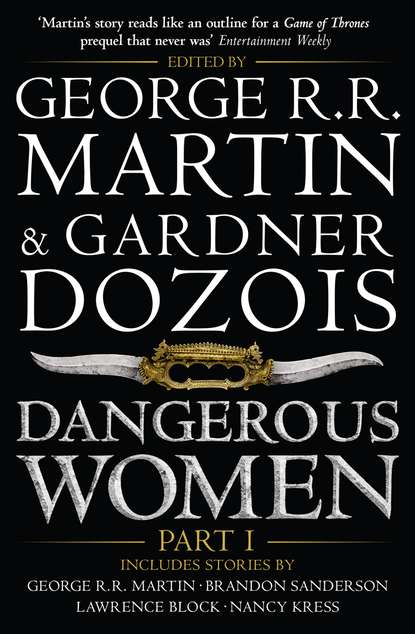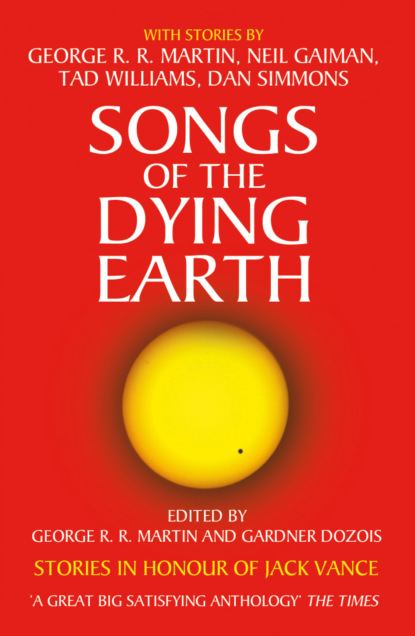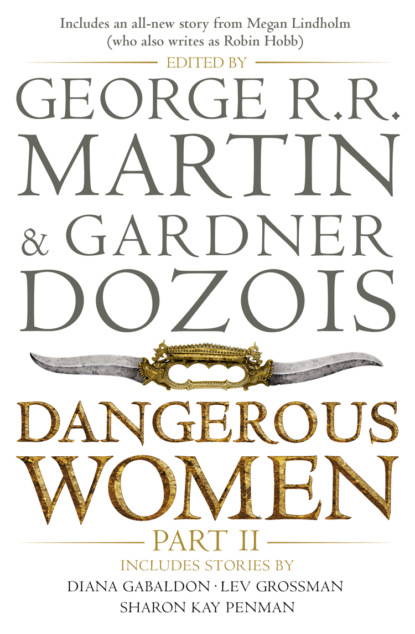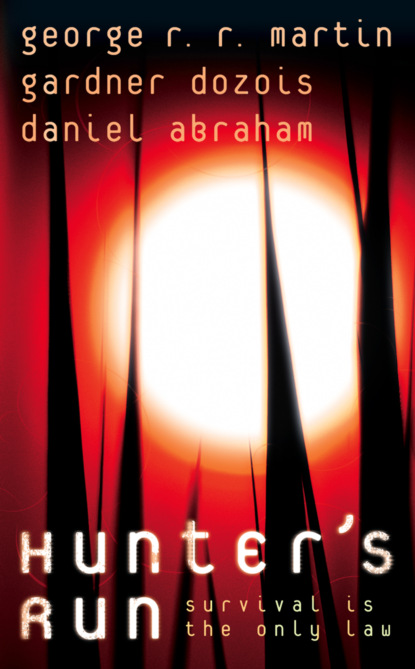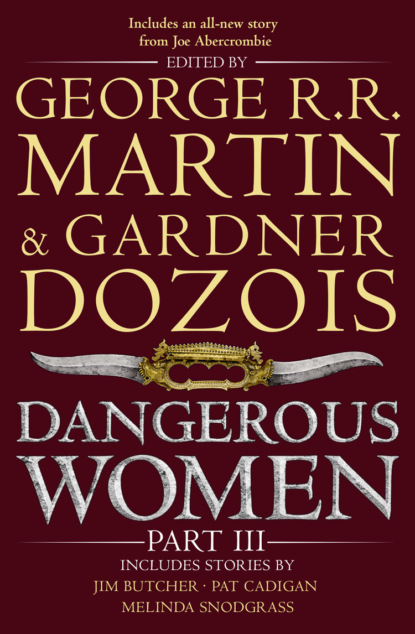
Полная версия
Dangerous Women Part 3



Copyright
HarperVoyager
An imprint of HarperCollinsPublishers Ltd
77–85 Fulham Palace Road,
Hammersmith, London W6 8JB
www.harpercollins.co.uk
First published in Great Britain by HarperVoyager 2013
Copyright © George R.R. Martin and Gardner Dozois 2013
Dangerous Women / Edited by George R.R. Martin and Gardner Dozois
Jacket layout design © HarperCollinsPublishers Ltd 2014
Jacket photograph © Royal Armouries
The author of each individual story asserts their moral rights, including the right to be identified as the author of their work.
A catalogue copy of this book is available from the British Library.
This novel is entirely a work of fiction. The names, characters and incidents portrayed in it are the work of the author’s imagination. Any resemblance to actual persons, living or dead, events or localities is entirely coincidental.
All rights reserved under International and Pan-American Copyright Conventions. By payment of the required fees, you have been granted the non-exclusive, non-transferable right to access and read the text of this e-book on-screen. No part of this text may be reproduced, transmitted, down-loaded, decompiled, reverse engineered, or stored in or introduced into any information storage and retrieval system, in any form or by any means, whether electronic or mechanical, now known or hereinafter invented, without the express written permission of HarperCollins.
Source ISBN: 9780007549443
Ebook Edition © November 2014 ISBN: 9780008104962
Version: 2014-08-22
Copyright Acknowledgments
“Some Desperado” copyright © 2013 by Joe Abercrombie
“City Lazarus” copyright © 2013 by Diana Rowland
“Hell Hath No Fury” copyright © 2013 by Sherrilyn Kenyon
“The Hands That Are Not There” copyright © 2013 by Melinda Snodgrass
“Caretakers” copyright © 2013 by Pat Cadigan
“Nora’s Song” copyright © 2013 by Cecelia Holland
“Bombshells” copyright © 2013 by Jim Butcher
Dedication
To Jo Playford, my dangerous minion.
[—George R.R. Martin]
Contents
Cover
Title Page
Copyright
Copyright Acknowledgments
Dedication
Introduction
Some Desperado by Joe Abercrombie
City Lazarus by Diana Rowland
Hell Hath No Fury by Sherrilyn Kenyon
The Hands That Are Not There by Melinda Snodgrass
Caretakers by Pat Cadigan
Nora’s Song by Cecelia Holland
Bombshells by Jim Butcher
About the Publisher
Introduction by Gardner Dozois
Genre fiction has always been divided over the question of just how dangerous women are.
In the real world, of course, the question has long been settled. Even if the Amazons are mythological (and almost certainly wouldn’t have cut their right breasts off to make it easier to draw a bow if they weren’t), their legend was inspired by memory of the ferocious warrior women of the Scythians, who were very much not mythological. Gladiatrix, women gladiators, fought other women—and sometimes men—to the death in the arenas of Ancient Rome. There were female pirates like Anne Bonny and Mary Read, and even female samurai. Women served as frontline combat troops, feared for their ferocity, in the Russian army during World War II, and serve so in Israel today. Until 2013, women in the U.S. forces were technically restricted to “noncombat” roles, but many brave women gave their lives in Iraq and Afghanistan anyway, since bullets and land mines have never cared whether you’re a noncombatant or not. Women who served as Women Airforce Service Pilots for the United States during World War II were also limited to noncombat roles (where many of them were nevertheless killed in the performance of their duties), but Russian women took to the skies as fighter pilots, and sometimes became aces. A Russian female sniper during World War II was credited with more than fifty kills. Queen Boudicca of the Iceni tribe led one of the most fearsome revolts ever against Roman authority, one that was almost successful in driving the Roman invaders from Britain, and a young French peasant girl inspired and led the troops against the enemy so successfully that she became famous forever afterwards as Joan of Arc.
On the dark side, there have been female “highwaymen” like Mary Frith and Lady Katherine Ferrers and Pearl Hart (the last person to ever rob a stagecoach); notorious poisoners like Agrippina and Catherine de Medici, modern female outlaws like Ma Barker and Bonnie Parker, even female serial killers like Aileen Wuornos. Elizabeth Báthory was said to have bathed in the blood of virgins, and even though that has been called into question, there is no doubt that she tortured and killed dozens, perhaps hundreds, of children during her life. Queen Mary I of England had hundreds of Protestants burnt at the stake; Queen Elizabeth of England later responded by executing large numbers of Catholics. Mad Queen Ranavalona of Madagascar had so many people put to death that she wiped out one-third of the entire population of Madagascar during her reign; she would even have you executed if you appeared in her dreams.
Popular fiction, though, has always had a schizophrenic view of the dangerousness of women. In the science fiction of the 1930s, ’40s, and ’50s, women, if they appeared at all, were largely regulated to the role of the scientist’s beautiful daughter, who might scream during the fight scenes but otherwise had little to do except hang adoringly on the arm of the hero afterwards. Legions of women swooned helplessly while waiting to be rescued by the intrepid jut-jawed hero from everything from dragons to the bug-eyed monsters who were always carrying them off for improbable purposes either dietary or romantic on the covers of pulp SF magazines. Hopelessly struggling women were tied to railroad tracks, with nothing to do but squeak in protest and hope that the Good Guy arrived in time to save them.
And yet, at the same time, warrior women like Edgar Rice Burroughs’s Dejah Thoris and Thuvia, Maid of Mars, were every bit as good with the blade and every bit as deadly in battle as John Carter and their other male comrades, female adventuresses like C. L. Moore’s Jirel of Joiry swashbuckled their way through the pages of Weird Tales magazine (and blazed a trail for later female swashbucklers like Joanna Russ’s Alyx); James H. Schmitz sent Agents of Vega like Granny Wannatel and fearless teenagers like Telzey Amberdon and Trigger Argee out to battle the sinister menaces and monsters of the spaceways; and Robert A. Heinlein’s dangerous women were capable of being the captain of a spaceship or killing enemies in hand-to-hand combat. Arthur Conan Doyle’s sly, shady Irene Adler was one of the only people ever to outwit his Sherlock Holmes, and probably one of the inspirations for the legions of tricky, dangerous, seductive, and treacherous “femmes fatale” who featured in the works of Dashiell Hammett and James M. Cain and later went on to appear in dozens of films noir, and who still turn up in the movies and on television to this day. Later television heroines such as Buffy the Vampire Slayer and Xena, Warrior Princess, firmly established women as being formidable and deadly enough to battle hordes of fearsome supernatural menaces, and helped to inspire the whole subgenre of paranormal romance, which is sometimes unofficially known as the “kick-ass heroine” genre.
Like our anthology Warriors, Dangerous Women was conceived of as a cross-genre anthology, one that would mingle every kind of fiction, so we asked writers from every genre—science fiction, fantasy, mystery, historical, horror, paranormal romance, men and women alike—to tackle the theme of “dangerous women,” and that call was answered by some of the best writers in the business, including both new writers and giants of their fields like Diana Gabaldon, Jim Butcher, Sharon Kay Penman, Joe Abercrombie, Carrie Vaughn, Joe R. Lansdale, Lawrence Block, Cecelia Holland, Brandon Sanderson, Sherilynn Kenyon, S. M. Stirling, Nancy Kress, and George R. R. Martin.
Here you’ll find no hapless victims who stand by whimpering in dread while the male hero fights the monster or clashes swords with the villain, and if you want to tie these women to the railroad tracks, you’ll find you have a real fight on your hands. Instead, you will find sword-wielding women warriors; intrepid women fighter pilots and far-ranging spacewomen; deadly female serial killers; formidable female superheroes; sly and seductive femmes fatale; female wizards; hard-living bad girls; female bandits and rebels; embattled survivors in postapocalyptic futures; female private investigators; stern female hanging judges; haughty queens who rule nations and whose jealousies and ambitions send thousands to grisly deaths; daring dragonriders; and many more.
Enjoy!
Joe Abercrombie
As the sizzlingly fast-paced and action-packed story that follows demonstrates, sometimes chasing a fugitive can be as dangerous for the pursuers as for the pursued—particularly when the quarry has no place left to run …
Joe Abercrombie is one of the fastest-rising stars in fantasy today, acclaimed by readers and critics alike for his tough, spare, no-nonsense approach to the genre. He’s probably best known for his First Law trilogy, the first novel of which, The Blade Itself, was published in 2006; it was followed in subsequent years by Before They Are Hanged and Last Argument of Kings. He’s also written the stand-alone fantasy novels Best Served Cold and The Heroes. His most recent novel is Red Country. In addition to writing, Abercrombie is also a freelance film editor and lives and works in London.
Конец ознакомительного фрагмента.
Текст предоставлен ООО «ЛитРес».
Прочитайте эту книгу целиком, купив полную легальную версию на ЛитРес.
Безопасно оплатить книгу можно банковской картой Visa, MasterCard, Maestro, со счета мобильного телефона, с платежного терминала, в салоне МТС или Связной, через PayPal, WebMoney, Яндекс.Деньги, QIWI Кошелек, бонусными картами или другим удобным Вам способом.



